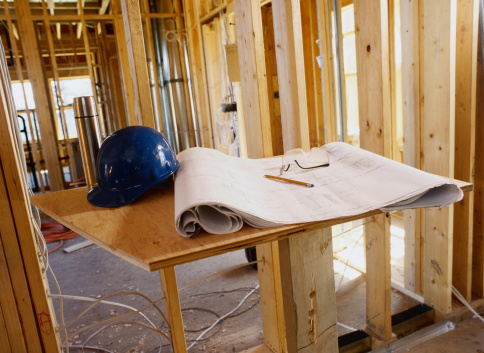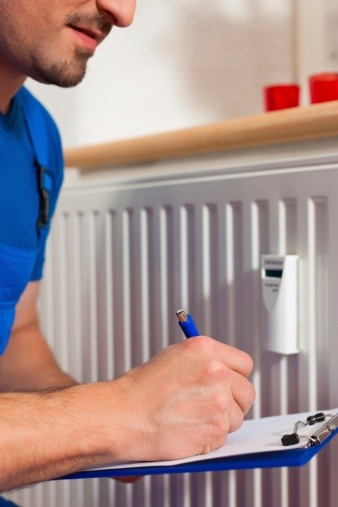 To varying degrees, most people have the pride of ownership gene.
To varying degrees, most people have the pride of ownership gene.
It's what compels us to beckon friends and neighbors to take a look at our new stereo system, wide-screen TV, six-burner, gourmet-style stove or even front-load washer.
But in the more than 60 years that Experts In Your Home has been serving homeowners in northern California, we have never heard the gene extend itself to someone's new furnace. The looks of most furnaces probably have a lot to do with it: gray, boxy and drab, furnaces don't engender the “oohs” and “ahhs” of more visually appealing electronics and appliances with entertaining features. By contrast, a furnace “only” keeps you warm.
We agree – to a point. A furnace might be dull, but it also keeps you healthy and safe. And as one of the most expensive items in your home that you replace only once every 15 to 20 years, you might be tempted to exhibit the pride of ownership gene – and maybe even take a picture of that boxy contraption – once you understand the steps involved in buying a new home heating system from Experts In Your Home.
Experts In Your Home Preserves New Furnace Benefits
If you've read our previous article on the subject – “How a home heating technician can evaluate your old heating system” – then you already know: the home heating experts at Experts In Your Home inspect your furnace and go through a thorough list of questions to help you decide whether to repair or replace your furnace, following recommendations from the U.S. Department of Energy.
At this point, you have much to look forward to, as a new furnace should:
- Eliminate safety concerns (especially with regard to carbon monoxide emissions)
- Operate more reliably
- Provide greater comfort
- Run more efficiently, thereby saving you money on your gas bills
- Be more environmentally friendly
The U.S. Environmental Protection issues a caveat, however, in pointing out that many of these benefits can be erased if “newly installed heating and cooling systems are under- or over-sized, improperly (chosen) or connected to a poorly designed and installed duct system...”
Experts In Your Home is proud to say: You never have to give these issues a second thought. In fact, the the EPA warning actually forms the basis of the three key steps involved in how we help homeowners select a new home heating system in the first place.
Three Key Furnace Factors
- Sizing is a key step because when you buy a heating system that is too small, it will run longer to reach the designated temperature on your thermostat – if it ever does. Many contractors over-compensate by selling furnaces that are intentionally too large (and also more expensive). But this is no safeguard; the sheer size of oversized furnaces means that they run for a very short time to reach a thermostat setting and then shut off. This process, called short cycling, is inefficient, much like stop-and-go driving in a car. It leads to uneven heating in a home and unneeded stress on a furnace, which undercuts its longevity. Experts In Your Home takes the time to size a furnace right for home, factoring in its age, square footage, layout, shading and other issues.
- Efficiency is a key step, but sometimes a tricky one to navigate in northern California. New Energy Star furnaces score efficiency ratings in the 90s – a vast improvement over furnaces manufactured in 1992, when federal efficiency standards were set at 78 percent. As Consumer Reports notes, “the price of a furnace generally rises in step with its fuel efficiency,” though over time, the higher efficiency should translate to lower gas bills to help recoup the higher cost. But with how much time? People who live in harsh winter climates – Michigan, Minnesota and Illinois – might be able to easily justify the expense of a furnace with the highest efficiency rating. Experts In Your Home takes the time to show you the options, inspect how well your home is insulated and then “do the math” to help you choose the furnace that is right for you.
- Inspecting your ductwork is a key step because as a department of energy study found, “typical systems with ducts in attics or crawl spaces lose from 25 percent to 40 percent of the heating or cooling energy that passes through them.” Further studies have found that most homes are plagued by two or more common duct problems: poor engineering and/or design; restricted air flow; poor insulation; and (most common of all) leaks. After reviewing reams of data from the department, the EPA, gas and utility companies and consumer advocacy groups, researchers at The Comfort Institute say: “A properly trained, conscientious and competent contractor knows that up to half of your new system’s efficiency and comfort will depend on the state of your ductwork. Before he gives you a price for a new system, he will at least visually inspect your ducts for common problems.”
Experts In Your Home wants you to derive all the benefits of a new home heating system, and we ensure that you do, right down to our expert installation practices. As the institute says: “The most important part of your buying process is to pick the right contractor: one who has the knowledge, training, instruments and procedures to help you select your new system, install it properly and also solve pre-existing problems with your duct system.” We couldn't say it better ourselves – because we want you to exhibit the pride of ownership gene about your new furnace. Contact us today for a quote.
For more information about home heating, download the FREE eBook below:








